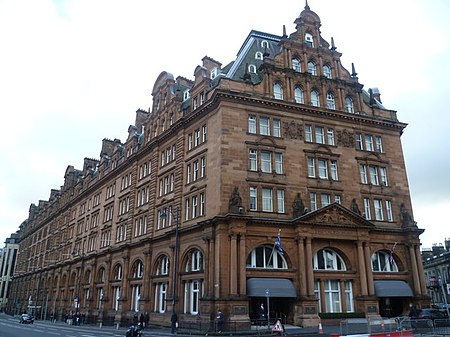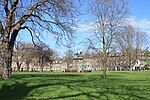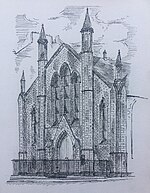Edinburgh Princes Street railway station
1870 establishments in Scotland1965 disestablishments in ScotlandBeeching closures in ScotlandBuildings and structures demolished in 1970Disused railway stations in Edinburgh ... and 5 more
Former Caledonian Railway stationsPages with no open date in Infobox stationRailway stations in Great Britain closed in 1965Railway stations in Great Britain opened in 1870Use British English from February 2017

Princes Street Station was a mainline railway station which stood at the west end of Princes Street, in Edinburgh, Scotland, for almost 100 years. Temporary stations were opened in 1848 and 1870, with construction of the main station commencing in the 1890s. The station was closed completely in 1965 and largely demolished in 1969–70. Only its hotel remains, but it is no longer in railway ownership.
Excerpt from the Wikipedia article Edinburgh Princes Street railway station (License: CC BY-SA 3.0, Authors, Images).Edinburgh Princes Street railway station
Rutland Street, City of Edinburgh Haymarket
Geographical coordinates (GPS) Address Nearby Places Show on map
Geographical coordinates (GPS)
| Latitude | Longitude |
|---|---|
| N 55.949166666667 ° | E -3.2075 ° |
Address
The Caledonian
Rutland Street
EH1 2AN City of Edinburgh, Haymarket
Scotland, United Kingdom
Open on Google Maps











